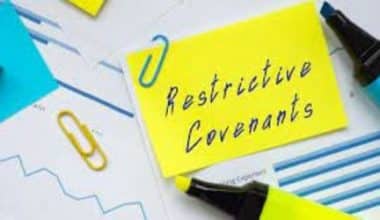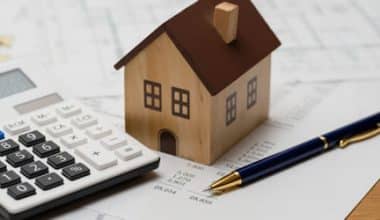Since land doesn’t typically become obsolete or used up, its purchase price isn’t eligible for depreciation. However, the loss is recorded at the time of sale. It is not possible to depreciate the cost of land because it includes the costs of clearing, grading, planting, and landscaping. However, if the land preparation expenditures are so intrinsically linked to other depreciable assets that you can assign them the same useful life as the linked assets, then you may be able to depreciate them. Read on to find out when land can get depreciated. We also added five ways land can get depreciated. Why not dive in to grab the full details?
What Is Depreciation?
A company’s assets consist of anything that contributes to the company’s bottom line. Stocks, inventories, raw materials, computers, printers, trucks, machinery, workstations, land, and buildings are all examples of fixed assets. The depreciation expense can be spread out across the useful life of an asset, as permitted by the Internal Revenue Service.
- Tangible: Tangible, material possessions.
- Intangible: Goodwill and stocks are examples of intangible assets whose worth cannot be estimated.
- Movable: Liquid assets that can be converted into cash quickly, such as current merchandise, stocks, or cash on hand.
- Immovable: Machinery, trucks, and buildings are all examples of the kinds of long-term investments and daily workhorses that go under the umbrella term “fixed assets.”
Your fixed assets will inevitably become obsolete. Now is the time to get rid of them, either by selling them or giving them away.
In any case, you’re paying too much for what you get. Depreciation is an expense that a firm incurs when an asset loses value between the beginning and conclusion of its useful life. A portion of this price is recorded as a recurring expense each year in the company’s financial statements. Your company will get tax benefits from this action. Depreciation accounting requires a thorough familiarity with tax regulations and asset depreciation schedules.
Can a Land Be Depreciated?
You might have been asking yourself this question “Can a land be depreciated?”. There is a key reason why land never depreciates, and the Internal Revenue Service (IRS) provides several different words for depreciation. As reported by the IRS: The value of land never decreases. Since land is not eligible for depreciation, the total purchase price must be split between the land and the structure. Using the assessor’s numbers, you may determine how much the land is worth in comparison to the structure.
The Internal Revenue Service does not permit the depreciation of land since its worth is so difficult to estimate. There are many potential uses for land, including serving as a building site, hosting a new residence, or being farmed for financial gain in any given year. Therefore, in the eyes of the Internal Revenue Service, land and improvements constitute two entirely distinct purchase categories. The IRS equivalent land value can be calculated by multiplying your local tax assessor’s form by 25%. Land improvements account for the remaining 75% of the total assessment.
When Can a Land Be Depreciated?
It is extremely difficult to calculate a depreciated land because its useful life is not well-defined. Depending on a number of factors, its value could increase or decrease over time. A real estate boom, for instance, can drive up land prices, while an environmental catastrophe, on the other hand, can drive them down. Depreciation can be claimed on land-based assets like buildings. Although land itself is not depreciable, certain improvements have a finite lifespan and can be written off as such. Paving a driveway, erecting a fence, installing outside lighting, or even reclaiming a barren patch of land by filling it with dirt are all examples of land improvements.
Evidence of depreciation due to either natural or anthropogenic factors can also be recorded. Such catastrophic events as earthquakes or resource-depleting mining operations are examples.
Five Ways a Land Can be Get Depreciated
Here are five ways a land can get depreciated. But can a land be depreciated? Read on to find out!
#1. Physical Deterioration
Physical degradation or wear and tear is a common contributor to land depreciation. Natural calamities like floods and storms, as well as land-based activities like farming, logging, and construction, can all contribute to this type of deterioration. It is one of the ways a land can get depreciated. When land deteriorates to the point where it is no longer suitable for human use or construction, its market value drops.
#2. Pollution of the Environment
Industrial activities not only pollute the air, water, and soil but also contribute to the depreciation of land. It is one of the ways a land can get depreciated. Potential purchasers or developers may be put off if the land is contaminated. Exposure to harmful compounds in polluted soil or water sources on the property also poses a health risk due to contamination.
#3. The State of the Market
The land’s worth may go up or down depending on market conditions like an increase in supply or drop in demand for comparable properties in the area. It is one of the ways a land can get depreciated. For instance, if there is a significant uptick in the number of new homes being built in a given location, the existing properties there may become less desired, leading to a decline in price. Similar to how fewer people would be willing to invest in real estate if the economy stagnated, this would lead to falling property values.
#4. Constraints of Place
The location of a piece of property is another factor that could decrease its worth. It is one of the ways a land can get depreciated. For instance, if it’s located near a busy highway or airport, the adverse effects of noise pollution and traffic congestion could reduce its market value. Put off potential buyers who need a tranquil neighborhood.
What’s more, let’s say a piece of real estate is situated too far from major population areas and the conveniences they provide. If inhabitants have to go further on a regular basis to obtain necessities, it will be considered less desirable.
#5. Laws and Policies
Land that is less usable due to restrictions imposed by the government may be less desirable to potential buyers or developers. It is one of the ways a land can get depreciated. Furthermore, some activities may be prohibited by zoning laws, reducing their potential earnings. However, regulatory agencies may restrict construction projects if they threaten local ecosystems by failing to meet environmental protection criteria.
The Depletion Method
A depletion is a form of land depreciation that results from extracting and using the land’s natural resources. In the mining business, this kind of bookkeeping is standard. The corporation takes into account the depletion of natural resources because of their finite nature. Acquisition, exploration, and development expenses related to the mining resource will all be factored into the final tally. After mining operations are completed, the corporation must comply with environmental rules and do the restoration. Those expenses are also eligible for depreciation.
How to Calculate a Depreciated Land
The following steps are what you need to follow to calculate a depreciated land;
Step 1
Find out how much the land is worth right now. It’s crucial because it’ll serve as the foundation on which the depreciation is based. You’ll need to know the land’s current market worth in order to calculate its depreciation.
Step 2
Find out how many years you can expect the land to be productive. How long the land is projected to last and for what purposes (farming, mining, construction) is variable.
Step 3
Estimate annual savings by allocating the land’s initial cost across its expected lifespan. The depreciation value per year can be calculated in this way. The annual depreciation rate is calculated by multiplying this number by a factor, say 0.1.
To calculate the decline in land value, use the following formula:
Depreciation per year = (Initial Price / Usage Years) * Factor
Variables like soil erosion and flooding can shift the parameters anywhere from 0.05 to 0.20.
Example of How to Calculate a Depreciated Land
Assume an investor has spent $50,000 on a piece of land that is predicted to last for 10 years. Because of issues with soil erosion, a factor of 0.15 was used. The following formula can be used to determine the yearly cost of depreciation:
If you divide $500,000 by 10 years, you get $7,500 as the annual value depreciation.
As a result of multiple issues, including soil erosion and flooding, the annual loss in value of the lot is $7,500. Because of this reason, the parcel’s value plummeted to the point where it was only worth its salvage value. Salvage value is the estimated worth of an asset once its usable life has ended. Accounting depreciation is usually shorthand for depreciation. Allocating an asset’s cost over its useful life brings maintenance and replacement costs into line with the income generated by the asset.
Since depreciation on assets is deductible as a business expense in accordance with IRS standards, companies also establish accounting depreciation schedules with tax benefits in mind. Depreciation methods can range from the straightforward straight line to the more complex accelerated or per-unit approaches.
Accounting Effects for Change in Values of Land
Land’s worth can rise or fall over time. In 2022, for instance, the land was valued at $1 million. The land is worth $1.5 million in 2023 and might be worth even more if positive changes are made to the surrounding neighborhood. But if the same piece of land is used for farming and there are natural disasters in the area that make farming unpleasant in the future, its value plummets. However, this decrease in value cannot be referred to as depreciation because it is unpredictable and dependent on outside factors.
It’s possible that the value will increase once more as a result of unrelated factors. This value shift should not be considered depreciation. The only time the land value deduction can be made is during a sale. If the landowner still owns the asset, any increase or decrease in value will not influence or be claimed by the owner. However, if the value decreases, the loss is claimed as a capital loss, and if the value grows, the profit is claimed as a capital gain. Although land itself does not qualify for depreciation, the assets located on such land always do. Although these additional assets may contribute to the land value decline, their impact on the depreciation of this land is negligible at best.
However, if the site requires upgrades to accommodate these other assets, the cost of those enhancements may also be depreciated.
Making Solid Decisions and Planning for Your Future
If you want to make the best decisions possible and get the most out of your land, you need to know what it’s worth. Fencing, utilities, and blacktop driveways are typical development pressure zone improvements. The installation of utilities like electricity and sewage systems can greatly enhance the value of your property. A septic system or a well is a frequent upgrade in rural areas.
It’s important to recognize that different people will have varied ideas about what constitutes a rural area. Different levels of accessibility are possible in rural areas; one size does not fit all. According to the standards of your state, a location that is 35 minutes from a big city can be classified as rural. In the United States, it’s possible to drive an hour or less and reach a farm. Due to regional differences, several pieces of advice that seem effective in one rural area may fall flat in another. When it comes to suggesting changes, rural communities speak the loudest. Get advice on what to depreciate and sell from a tax expert and a real estate agent.
Land, in contrast to houses, relies on its services and the quality and upkeep of the property, such as the removal of brush and the elimination of debris, to increase its curb appeal. If you want to sell your land to first-time purchasers, you need to make enhancements that make it more desirable. If your site is desirable, prospective purchasers will have no problem allocating 25 percent of their construction budget to you. Landowners can get advice from accountants and the Internal Revenue Service on what kinds of improvements qualify for tax breaks.
Why Is Land Not Depreciable?
The land is not subject to depreciation because its useful life is typically considered infinite. The same is true of other long-term assets including land enhancements, buildings, furniture, equipment, etc. Thus, the expenses associated with these assets must be charged to the relevant accounting periods.
What Happens if Your Land Gets Depreciated?
Since it is assumed that land will remain in use indefinitely, it does not qualify as depreciable property and so cannot be written off over time. Due to the eternal element, its useful life is regarded as limitless, making it one of the few assets that cannot be depreciated.
Is Land Capitalized but Not Depreciated?
All expenditures for land and improvements made to land are capitalized. There is no depreciation in the value of land or land improvements because they are not used.
Final Thoughts
Understanding how land gets depreciated as an accounting concept is crucial since it can significantly impact the success of a corporation. When the value of a piece of land decreases over time due to factors like age, wear and tear, or obsolescence, this is known as depreciation. It’s something to think about when assessing a company’s finances, as it can damage those whose main source of income island. Consideration of how land gets depreciated can aid firms in increasing earnings and making financially prudent decisions over the long run. Companies need to include market value fluctuations when calculating depreciation rates, as this might affect the amount of land that has lost value over time.
Related Articles
- DEPRECIATION ACCOUNTING: Definition, Methods, Formula & All You Should Know
- LOAN FOR LAND PURCHASE: All you Need To Know
- LAND HOME FINANCING: Everything You Need To Know
- How To Buy Land: Step-by-step Guide
- BEST 2023 REAL ESTATE INVESTMENTS For Beginners & all You Need






